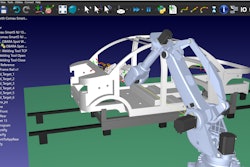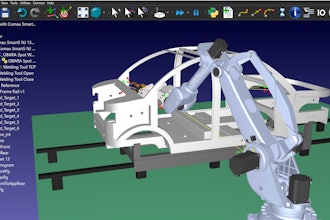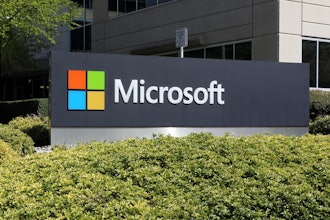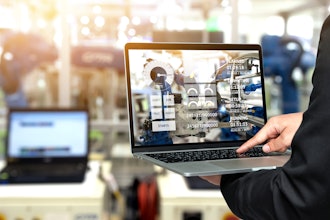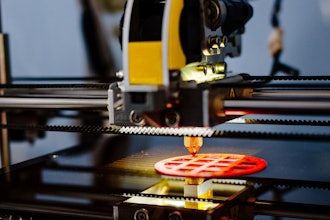Augmented reality is gaining a stronger foothold in the consumer market, such as with automotive manuals and video games. But many manufacturers are overlooking the potential efficiency augmented reality can unlock in both day-to-day maintenance and training activities by providing on-the-spot information. In an exclusive interview Manufacturing.net conducted with Chief Operating Officer and Executive Vice President Dexter Lilley of Index AR Solutions, he outlines the development of industrial augmented reality, where it could play the biggest role for manufacturers and where the technology is going next.
Katie Mohr (KM): How would you summarize the state of augmented reality within industrial settings this past year?
Dexter Lilley (DL): I think there was a big distinction between the first half of 2015 and the second half of 2015. I think the first half is characterized by a skepticism that augmented reality in industry was ready for prime-time. There are, after all, only a few companies in the industrial AR space and a critical mass of opinion wasn’t reached early on in 2015.
But, in the second half of 2015, things changed. Apple bought Metaio, which had the second largest market share of AR after Vuforia. Then, Google invested in Magic Leap and, finally, Microsoft announced Hololens. These three moves by the technology superpowers ignited conversation around AR and, inevitably, what it could be used for outside of the consumer space. I would say the second half of 2015 was characterized by significantly increased awareness and understanding that this isn’t another fad. AR is here to stay, and it has applications outside of the consumer space.
The biggest misconception about AR is that it’s not ready to solve industrial challenges. Everyone seems to be waiting for the perfect set of glasses or heads-up displays when 70 to 80 percent of the value of AR can be realized with off-the-shelf tablets and smartphones. Index AR Solutions has completed almost 50 projects with our teaming partner, Newport News Shipbuilding, using just tablets. And many of these projects have shown significant improvements in cost, quality and schedule performance.
KM: How do you predict AR will affect the industrial space in 2016?
DL: I think we will see one or two major industrial companies publicize significant improvements achieved using AR-based tools. I think there will be many more industrial companies that begin experimenting with AR and decide not to publish their results because they want to stay ahead of their competition.
AR will play a large role in both training and day-to-day operations. We’ve seen training times cut in half in many applications. I expect training departments across the industry to start experimenting with AR in some of their more complex training applications. Day-to-day activities such as inspection, logistics, building, operations and maintenance all have use cases that will enable workers and technicians to do more, reduce the times some steps take and totally eliminate other steps.
AR will be ubiquitous in industrial environments in 10 years. Everyone will have access to data about their environment, their work or any other situation in which digital on-demand data is required to improve efficiency and effectiveness. Between now and then, there will be an evolutionary trend of usage which will rapidly become revolutionary as companies begin to understand the tremendous impact that AR technology can have on their top and bottom lines.
KM: When should manufacturers take the leap into AR?
DL: Innovative, early adopters of AR will benefit the most and will see the most usage in day-to-day activities including training, pre-visualization, manufacturing, construction, inspection, operations and maintenance. I believe this will begin as a trickle and soon become a flood as more people become educated in what can and cannot be accomplished with AR technology.
The hardware and software that drives augmented technology will become more sophisticated, easier to use and focused on specific use cases. The key will be in understanding where to apply this technology to gain the biggest bang for the buck.
Industries that still require that a significant amount of work be performed by skilled workers will benefit the most, such as heavy manufacturing and fabrication, building and facility construction and oil and gas construction and operations.
Like the introduction of the steam engine in the 1800s, AR is going to change everything. It will leverage 3D assets and other digital information that most companies have already invested in and put that information in the hands of workers and technicians where they need it, when they need it and in the form that’s intuitive and easy to use. AR will enhance workers and technicians to a point that some robots might be replaced by the augmented worker.
Predictions Synopsis
So, to sum up Dexter Lilley’s predictions:
- A handful of big-name companies will publicize successful experiments with augmented reality, but the vast majority of companies will keep AR investments a trade secret.
- AR will be implemented in complex training operations.
- AR will enhance skilled workers in day-to-day operations, maintenance and inspections.
- AR will be an industrial staple in 10 years.
How do you predict augmented reality will impact the manufacturing industry in 2016? Do you think this technology would be valuable for all manufacturers? Comment below or tweet @MNetKatie.
Correction: This article has been corrected to note that Google invested in, not purchased, Magic Leap.







